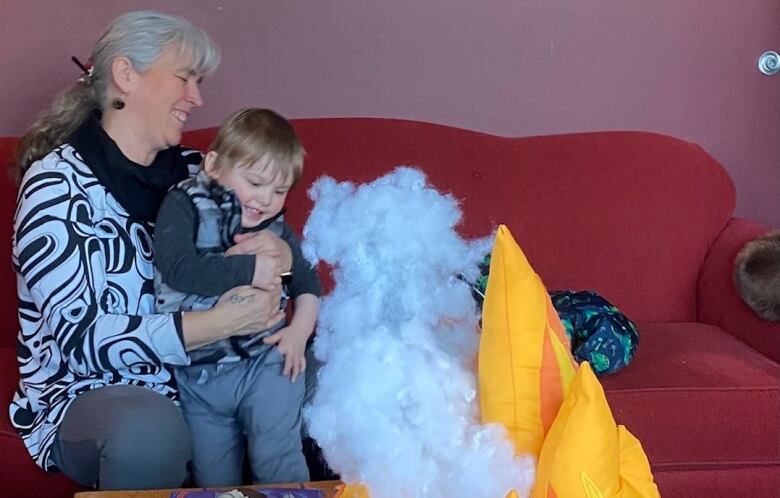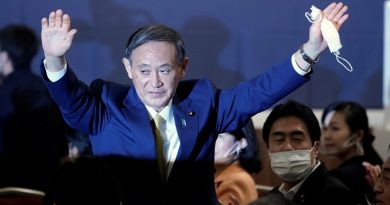Yukon’s First Nation School Board brings culture to the classroom in inaugural year
Lauren Wallingham and her daughter Leah walk on a wooded path from their home in Whitehorse to Takhini Elementary School, where Leah is beginning Grade 2.
Leah says she’s nervous to meet her new teacher — but something else is new at the school this year, as well.
Eight schools in the Yukon, including Leah’s, have officially joined the First Nation School Board — the first of its kind in Canada — after a historic referendum vote last January. Now in its inaugural school year, the goal of the board is to give Indigenous people more say around education and bring cultural knowledge into the classroom.
Students of any background can attend. As with all Yukon elementary schools, the First Nation School Board schools will continue to follow British Columbia’s curriculum — but with an additional aim to return to land-based, traditional learning that draws from community knowledge-holders and elders. In doing so, the goal is to empower and affirm a sense of identity in the students.
“I’m hopeful,” Wallingham told The Current host Matt Galloway of the new changes. “I hope that she’ll be outside a lot. Learning about this place we live in, the environment and the traditions that Indigenous people have.”

‘The warriors we didn’t see’
It’s an experience many Indigenous people haven’t had in the Canadian public school system — and that’s something Melanie Bennett, executive director of the Yukon First Nation Education Directorate and member of the Tr’ondёk Hwёch’in First Nation, said she hopes to see change.
Arguments for the establishment of a First Nation-led school board were largely fuelled by a 2019 report from the auditor general of Canada, which highlighted a deficiency in support for Indigenous and rural students in the territory.
Bennett, who was a primary player in bringing the school board to fruition, said she has high hopes for what this will mean for Indigenous students.
“I think the biggest thing is confidence and being OK knowing who you are,” Bennett said of the new program.
She describes her grandmother secretly teaching her classmates Indigenous language after school.
“She taught us sewing but she closed the door and taught us how to speak the language at the same time. Those are the warriors we didn’t see.”

The next step toward reconciliation
The First Nation School Board is the next step toward reconciliation, said Melissa Flynn, the interim director. Flynn notes the contemporary school system in Canada strays from the community- and family-based education that is traditional to Indigenous learning.
“We had our own ways of knowing and being. How we taught children and how they learned from multigenerational people in their lives,” said Flynn.
The experience of Indigenous people with education in Canada remains fraught as survivors continue to grapple with the discovery of unmarked graves on former residential school sites across the country. In July, Pope Francis called what happened to Indigenous people at residential schools “genocide” — a belief long held by survivors.
“I think truth and reconciliation is a responsibility and a challenge for everybody who lives in Canada,” Flynn said.
“So this is really exciting to bring people together. It’s not a ‘them’ and ‘us’ scenario anymore. Reconciliation to me means everyone moving together who lives on a traditional territory.”

Bennett said she recalls students recognizing photos of historical figures like Sir John A. Macdonald, but not Indigenous ones like Francis Pegahmagabow, a First Nations soldier and politician. She attributes this to Westernized education, which often erases Indigenous heritage from its pages.
Establishing the First Nation School Board was a process of communication, said Flynn. Members of the Yukon First Nations Education Directorate reached out to Indigenous and non-Indigenous citizens to hear from them.
“This next step in reconciliation in our territory is really important,” Flynn said.
A collaborative effort
At Takhini Elementary School, music and French teacher Dorothy Williams weaves through her classroom as an ensemble of children holding various percussion instruments sits cross-legged on the floor. As the jangle and thump of cheerful music ends in a decrescendo, the students break into applause.

Williams isn’t Indigenous, and has been tasked with incorporating Indigenous music into her class. Eventually, she hopes to form a regular First Nations drumming group in her class led by a community member. She said she also wants to explore traditional Indigenous songs in her lessons — but that will be a collaborative process.
“Most First Nations songs I cannot sing. I don’t have permission to. So for me to have connections with community members and elders for music is extremely important.”
The First Nation School Board will help facilitate these connections, Williams explained.
“We’ve challenged the teachers to think about how to connect to community and how to connect to land wherever they’re at in their classrooms and their classroom activities,” said Flynn.
This includes field trips, studying Indigenous literature, and bringing knowledge-holders and elders into the classroom. As for non-Indigenous Yukoners, Flynn says the schools will be inclusive of all cultures.
“I hope moving forward, the inclusion model of recognizing and celebrating all Yukon students will come through in what we are delivering,” she said.
And as the school year gets underway, community eyes are on the First Nation School Board to observe its level of success. Teams from the eight schools were brought together before the school year began to discuss plans and expectations for the new framework.
“I think there’s a level of excitement. I think there’s a level of fear of the unknown,” Flynn said of the teachers and staff.
Making ‘good mistakes’
Bennett reflects on her grandmother teaching her how to bead.
“I remember my very first piece. It was a little orange necklace. I had to take it apart, I think six or seven times because I made a mistake, and my grandmother would say, ‘good mistake’ … I learned how to make good mistakes.”

This is the mentality Bennett said she hopes will be adopted in classrooms. Looking toward the future, she said her biggest hope is that these schools will help shape strong community members.
“What really matters is that you can stand up and say ‘I am’ — and name where you’re from,” Bennet said.
Lauren Wallingham has a similar hope for her daughter, Leah.
“It’s going to be their normal, which I’m really excited about.”
Written by Brianna Gosse. Produced by Ben Jamieson and Elizabeth Hoath.




